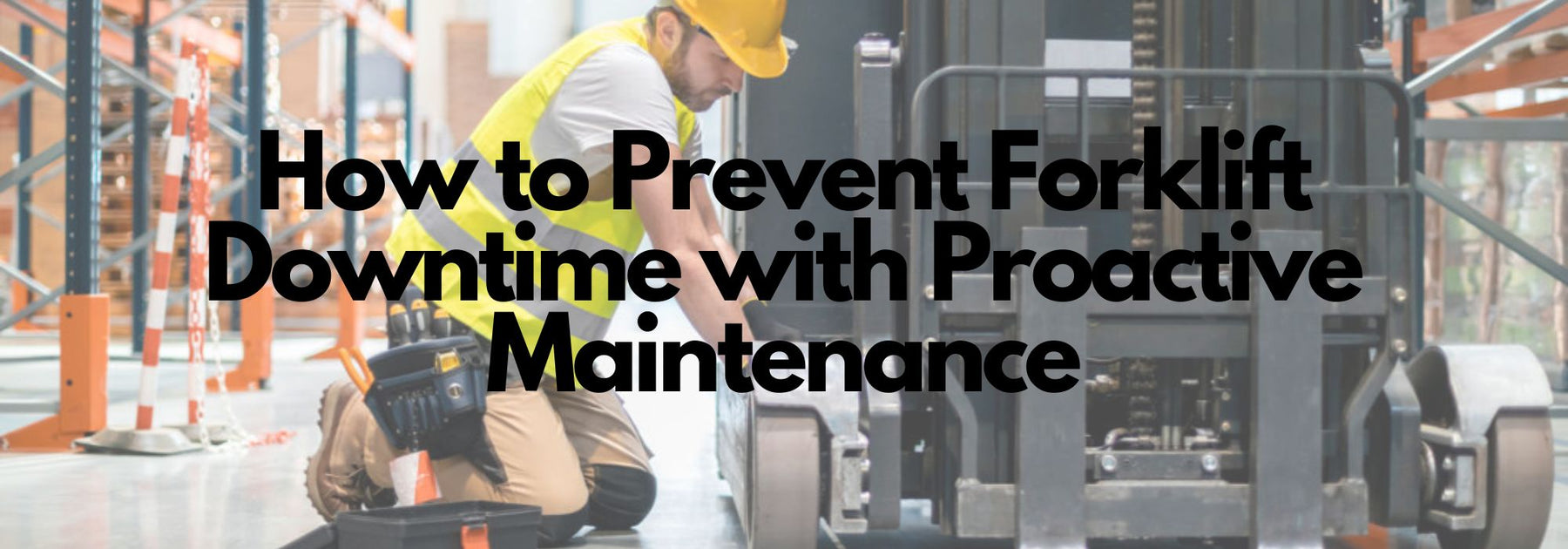
How to Prevent Forklift Downtime with Proactive Maintenance
Forklift downtime can severely disrupt warehouse operations, costing businesses significant time and money.
Proactive maintenance practices are key to preventing these costly interruptions and ensuring smooth, efficient operation.
This guide details essential forklift maintenance strategies to help your warehouse minimize downtime and maximize productivity.
Why Proactive Forklift Maintenance is Crucial
Proactive forklift maintenance involves regularly scheduled checks and servicing to detect and resolve issues before they become major problems.
This approach significantly reduces unexpected downtime, improves safety, and enhances overall operational efficiency.
Create a Detailed Forklift Maintenance Schedule
Developing a structured maintenance schedule is fundamental to preventing forklift downtime.
Regular inspections should include
- daily, weekly, and monthly checks
Focusing on:
- fluids
- brakes
- tires
- hydraulics
- and operational safety features.
Keeping consistent maintenance records helps identify recurring issues and ensures compliance with safety regulations.

Essential Daily Forklift Inspection Points
Daily forklift inspections can dramatically reduce unexpected breakdowns. Operators should routinely examine:
- Fluid levels (oil, hydraulic, coolant)
- Brake performance
- Tires for damage and correct pressure
- Fork and mast operation
- Lights, alarms, and horns
Identifying small issues early prevents larger, more expensive problems.

Weekly and Monthly Preventative Forklift Checks
More comprehensive weekly and monthly inspections ensure deeper mechanical integrity. Focus areas include:
- Battery health and connections (electric forklifts)
- Engine belts and hoses (internal combustion forklifts)
- Mast and lift chain lubrication
- Hydraulic hose condition and fittings
- Brake systems and steering components
The Importance of Operator Training in Preventative Maintenance
Properly trained forklift operators are your first line of defense against forklift downtime.
Training ensures operators recognize early signs of mechanical issues, follow correct operating procedures, and understand the importance of reporting any maintenance needs immediately.

Utilizing Technology to Monitor Forklift Health
Modern forklift maintenance software and telematics provide real-time monitoring and diagnostics, enabling proactive maintenance scheduling and swift issue resolution.
Using these technologies reduces manual errors, provides accurate performance data, and enhances predictive maintenance capabilities.

Establishing Partnerships with Reliable Maintenance Providers
Building relationships with trusted forklift maintenance providers can significantly improve maintenance quality and response times.
Partner with providers who offer comprehensive service packages, including routine inspections, emergency repairs, and detailed reporting.

Common Signs Your Forklift Needs Immediate Attention
Train your staff to identify critical signs of potential forklift issues, including:
- Unusual noises or vibrations
- Sluggish or inconsistent operation
- Frequent battery discharge (electric models)
- Fluid leaks
- Difficulty steering or braking
Addressing these signs immediately prevents extensive downtime and costly repairs.

Benefits of Proactive Forklift Maintenance
Adopting a proactive maintenance approach provides substantial operational benefits:
- Increased forklift lifespan
- Reduced operational downtime
- Improved workplace safety
- Lower total cost of ownership
Conclusion: Keeping Your Forklifts Operational and Efficient
Proactive forklift maintenance is essential for minimizing downtime, ensuring safety, and maximizing productivity in your warehouse. Implementing structured maintenance schedules, training operators effectively, leveraging technology, and establishing strong maintenance partnerships all contribute to optimal forklift performance.



Leave a comment